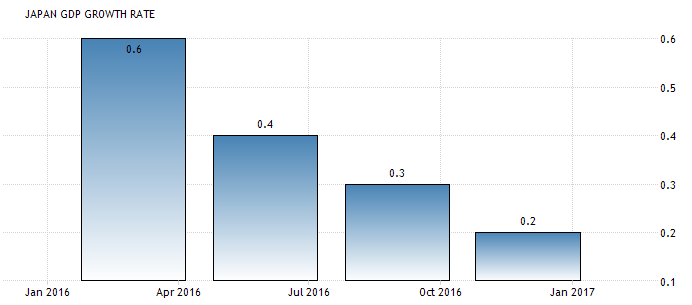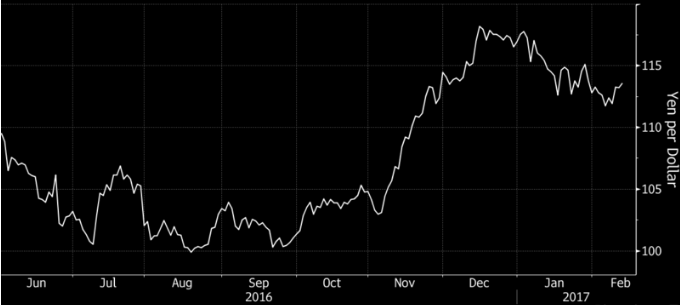Daily Insights Report 13/02/17
- 31 Mar 2017
13 Feb 2017
Japan’s first estimate of quarterly GDP grew 0.2%. Consumption and investment show to remain low, but net exports overall will positively contribute to GDP. Since there has been a recent depreciation of the Yen, exports grew in the final quarter of 2016. Industries including electronics and automotive parts grew the most. It has been the fourth consecutive quarter of growth, though growth in size seems to be decreasing. The Japanese economy has grown for four straight months. This is the longest period of growth in over three years.

Japanese firms are likely to be reluctant to increasing their spending, at the same time private investment will remain low. Stock prices in Tokyo gained after the meeting of the Japanese Prime Minister with the US President.
While the Japanese Yen initially suffered a strong depreciation at the time of the election in the US, it has since picked up and has strengthened in the past two months against the Dollar. The chart below shows how the value of the Yen has changed over the past two months. The Yen currently trades at 113.96, and the weakest point it saw was 115.94 (last month).

Over the weekend, Federal Reserve Vice Chairman Stanley Fischer said that there is “significant uncertainty” over the US fiscal policy. This week Janet Yellen will face US congress and signs of an interest rate increase may be seen from her. This would likely increase the value of the Dollar in the short-run as investors may rush to buy the Dollar with a higher interest rate.
Commodities
– Future contracts for iron ore were up 4.40% on the Dalian Exchange. This raw material is one of the major components used for making steel, vital for construction. It is trading at the highest level in over two years.
– Copper futures also rose, by 1.5% on the LME (London Metal Exchange). Friday saw the biggest jump in trading values since 2013.
– Gold fell by 0.38% to reach $1,231.20 an ounce.
– West Texas Intermediate (WTI) crude remained steady around the $56.69 per barrel. Looking at yearly growth, the price of oil has increased 84.92%

United States Dollar (USD)
Producer Price Index (PPI) (January)
January’s PPI is likely to show steady gains for the third straight month. Consistent gains in recent months have shown a 1.6% yearly gain in December. This is the fastest rate seen by producers in 27 months. Businesses should be forecasting for quicker cost growth. On an annual basis, PPI has only risen 0.9% a year in the last five.
Technical Analysis
EUR/JPY
This pair is currently moving towards the 121.50 level. The moving averages are at the upper boundary of the channel shown on the 4-hour chart below. With data scheduled to come from the Euro area this week, it may lead to a strengthening of the Euro. This would push the Yen towards the upper end of the channel (around 121.50). This would likely need to be a short trend, since the overall trend might be for the Yen to strengthen.
Phân tích kỹ thuật
EUR/JPY
Cặp tiền này gần đây đã tiến về mức 121.50. Sự di chuyển trung bình đang nằm trên đường giới hạn của kênh dữ liệu được hiển thị trong biểu đồ với khung 4 giờ dưới đây. Với những số liệu dự kiến từ khu vực châu Âu tuần này, nó có thể dẫn đến một sự tăng trưởng của đồng Euro. Điều này có thể sẽ đẩy đồng Yên lên mức cao nhất của kênh dữ liệu ( quanh 121.50 ) . Điều này có khả năng cần phải có một xu hướng bán, bởi vì xu hướng chung có thể là dành cho việc tăng cường đồng Yên Nhật.


